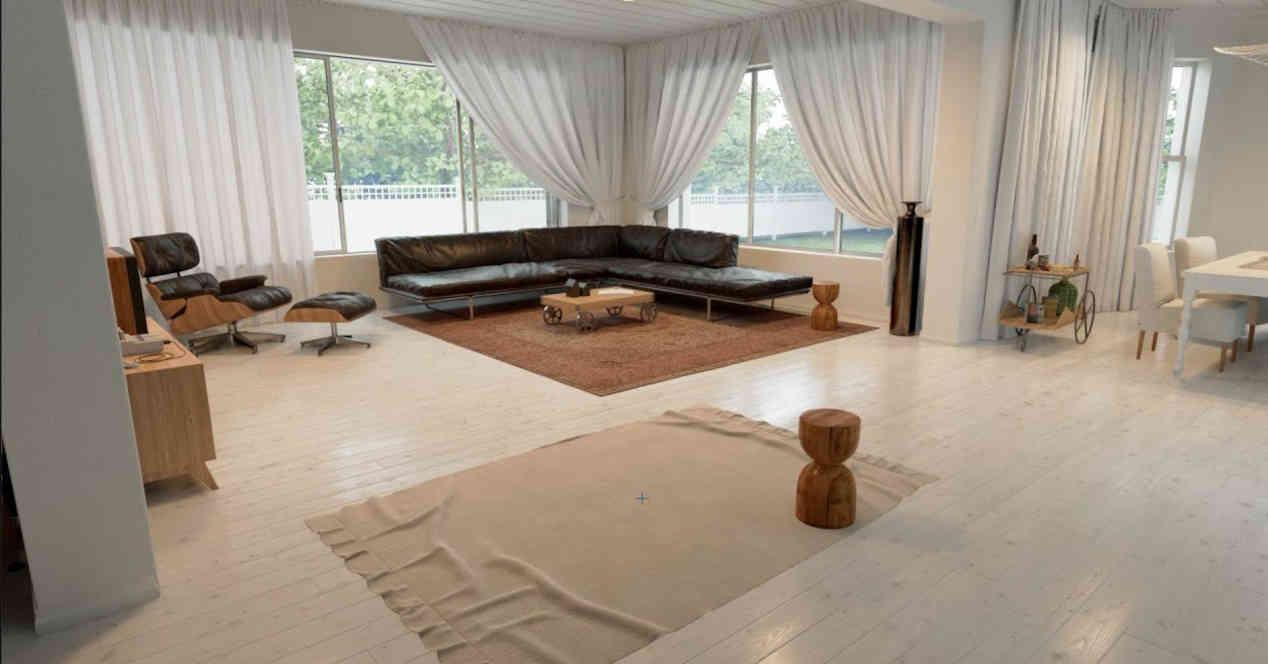- Light maps which consist in restoring the lighting of the scene from a point of the camera on a high power server. This information is converted into a texture which will then be applied to the scene. The result? The light does not change with the position of objects, it is false.
- Shadow maps which involves having the GPU render the scene as if the light source is the camera to store only the depth map and then use it as a texture to simulate shadows.
- Ambient Occlusion to mark points to darken or brighten more.
- Using environment maps, including environment cubes to simulate reflections.
This all comes from the fact that the rasterization cannot effectively represent the transport of light, its operation is like a painter who uses color techniques to create the feeling of lighting, but it is a limitation in order to achieve a greater graphic fidelity.
Representation of materials
Historically, we have been successful in representing material in rasterization through a combination of textures and shader programs to manipulate them, called pixel shaders in DirectX and fragment shaders in Vulkan. However, the fact that rasterization does not represent the behavior of light on objects well results in a poor representation of materials.
In the real world, when light falls on a highly polished metal ball, it does not behave the same as if it passed through a wooden ball. We cannot forget that refraction is the change of direction and slowness experienced by a light ray when it passes from one medium to another with a different refractive index. It is impossible to represent light in its actual physical behavior in a simulation, so we represent it as much as possible to our perception.
The idea with global lighting and technologies such as Lumen is to have a representation of materials that is true to our perception in the real world, simulating how each material emits light indirectly.
What is Lumen?
Lumen no es más que lo que llamamos un algoritmo de Ray Tracing por software, pero tal number da a la confusión debido a que la primera conclusión que se saca de ello es que se trata de un programa en la CPU realizando el trazado de rayos cuando It is not like that. In fact, any GPU can run the algorithm through the software that runs its cores, called shader programs. The problem, as in rasterization, comes from a precise point, the calculation of the intersection between the rays and the scene.
The solution at the hardware level was to add a small piece of hardware in each of the GPU cores to perform this task, the problem is that they allow us to use Ray Tracing as a rasterization aid, to perform a series of tasks. ‘Very simple overall lighting effects. Additionally, ray tracing, as opposed to rasterization, requires the use of complex tree data structures, which significantly reduces the speed at which intersection calculations can be performed.
The Epic solution therefore goes through a system that does not use such a data structure and that is where the key lies. Since in reality the algorithm was designed for new generation consoles, which, although they have specialized units to perform intersection calculations, present a series of difficulties due to the limitations of the RDNA 2 architecture. .
Is lumen better than ray tracing?
The answer is directly no, and this is not said by us, but by Epic itself and is that the level of overall lighting prec ision that can be achieved with Lumen is limited, as we have to take into account because it is a solution designed for creating video games, where rendering speed is key. So at the detail level it’s not that good, but there are parts in Lumen that will equate to Ray Tracing and hence it will be preferred over that as it is lighter to run and requires less of our resources. system.
PS5, Xbox Series and RDNA 2: limitations
AMD’s commitment to Ray Tracing came with the RDNA 2 architecture, which they managed to place in many places and where one of the workhorses was precisely the implementation of this technology in their GPUs two years after NVIDIA. However, they did so with some limitations in their implementation: the traversal of the BVH tree which stores the scene information is not performed by the intersection unit.
This is a huge reduction in performance, making the RX 6000 less capable when it comes to applying such algorithms. Fortunately, new hardware comes out on PCs every year, but what about consoles? This is a full five years with the same hardware and the same hardware limitations. Hence the existence of Lumen, it is a solution to bring a global light to the PlayStation 5, Xbox Series S and Series X consoles without its limited power being a stifle for it.
And what is happening on the PC? Lumen will be used in a plethora of console games as Unreal Engine 5 will be widely used and these games will be integrated into the computer with little change. Although this is a technology designed for the Ray Tracing limitations of RDNA 2, that does not mean that it is exclusive to AMD.
Table of Contents











